The matchbox maharagwe thief
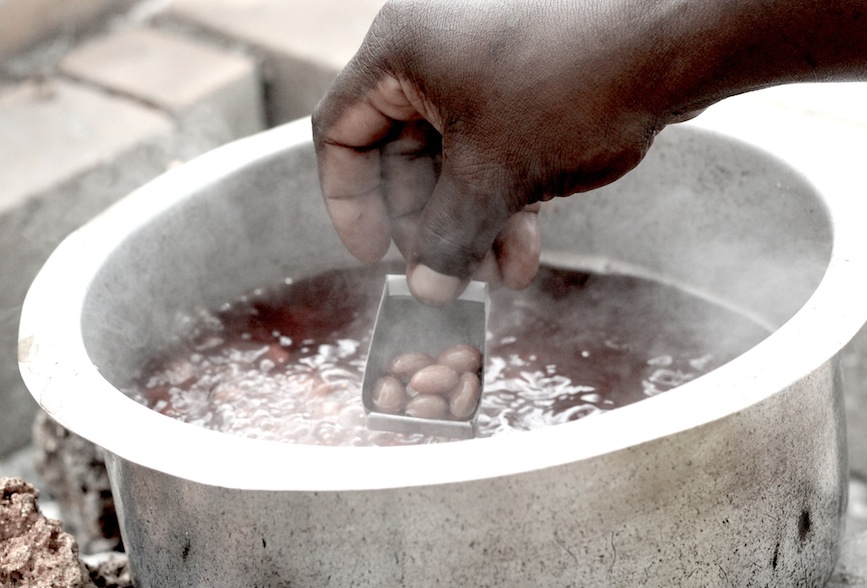
“If I could choose one dish to eat every day, it would be maharagwe.”
“As a child, I used to sneak up to the boiling pot with an empty matchbox, choosing this over a spoon because I could fit more maharagwe into a matchbox!” Idi tells us with the biggest “tabasam” (smile in Swahili) you have ever seen. “They knew it was me stealing the beans when I had to dump the matchbox with the threat of approaching footsteps, leaving evidence behind,” he remembers with a twinkle in his eye.
We are on Manda Island in the Lamu Archipelago, Kenya, learning to cook Idi’s favourite dish – Maharagwe na Wali na Nazi, which is a bean stew with fresh coconut rice.
Idi grew up in Tanzania until he was 19 years old at the compound of a Swiss group called Amboni where his father worked. Amboni Limited operated sisal plantations in the Tanga region of Tanzania. Over time, his father went from working in the garden of “muzungus” (foreigners), to cleaning houses and becoming a chef. As fate would have it, Idi has followed in his father’s footsteps – he first arrived in Lamu and started working as a gardener until finally becoming the chef and keeper of Mkoko House on Manda Island. As a practically self-taught chef, Idi picks up recipes here and there with ease and an instinct for flavour.
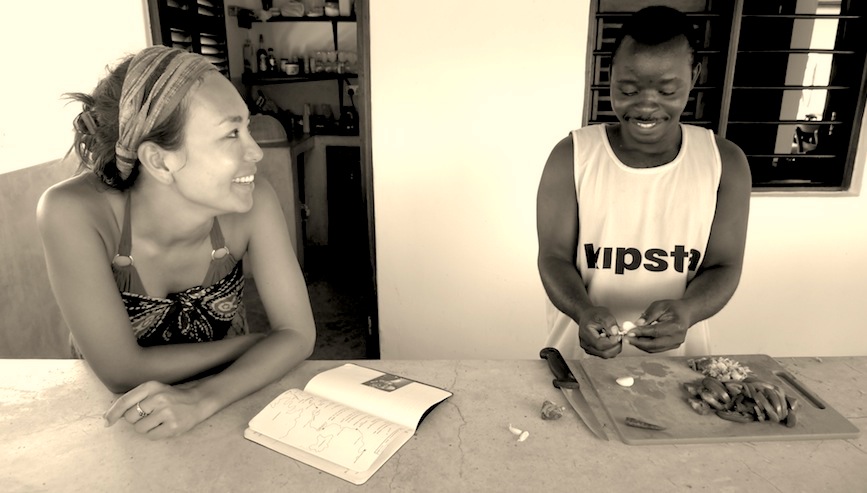
Maharagwe is the name for beans in Swahili and can refer to different ones such as the Niayo beans (the mottled red ones used in this recipe similar to Kidney beans or Borlotti) and Rose Coco beans which are a mottled white colour. Maharagwe remains one of the cheapest sources of protein on the East African coast. The cooked beans can be accompanied by ugali (ground cassava root porridge), rice or chapati, with ugali being the cheapest option and the most common choice.
Sometimes plain maharagwe is also consumed for dinner sprinkled with sugar and accompanied by black tea.

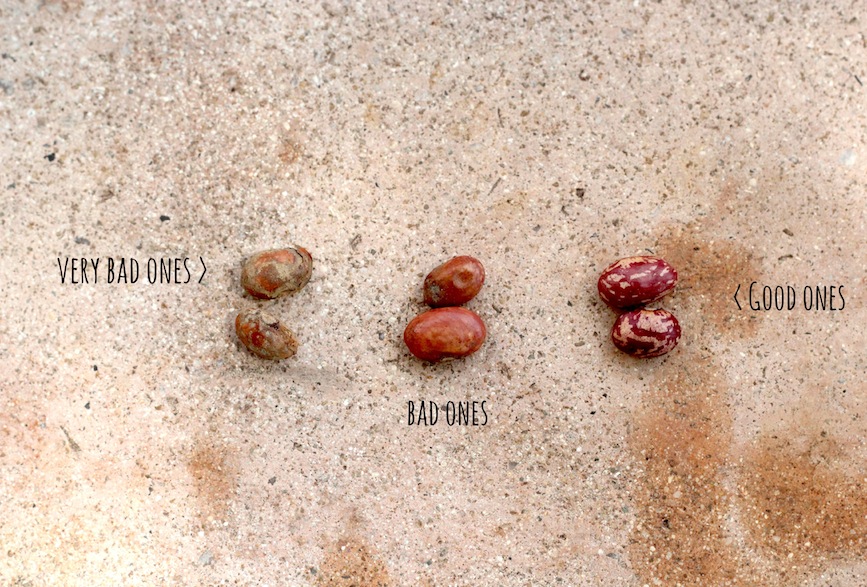
MAHARAGWE NA WALI WA NAZI \ˌma-ha-ra-gueh’\
The origin of maharagwe
In general Maharagwe/bean stew can be found along the coast of Eastern Africa, with this specific sauce being cooked in both Tanzania and Kenya.
Serves 4 to 6 people
For the Maharagwe
500g / 2 cups of dried kidney or borlotti beans (no need to pre-soak)
In order to preserve the flavour of the beans, this recipe does not require soaking the beans beforehand. Here we have rinsed them, then put them straight into a pot of water (make sure all the beans are covered by the water) and let them boil over a charcoal fire for about 45minutes to an hour until they are soft but not overdone. The same can be done over a stove.
When the beans are done, drain them and set aside, you may want to save some of the boiling water in case you want to thin the sauce later on, it is often also drunk as a nutritious drink it afterwards, nothing should be wasted.
For the sauce
The cooked beans
3 tomatoes (sliced)
1 small onion, chopped
2 tbsp vegetable oil for frying
knob of ginger, chopped
2 cloves of garlic, chopped
1 red bird’s eye chilli with seeds removed
½ tsp toasted black peppercorns
1 heaping tsp coriander powder
½ tsp of garam masala
pinch of salt
a couple of bay leaves (dried or fresh)
½ cup coconut milk
Put the garlic, ginger, chilli and peppercorns into a mortar and pestle or a blender until you get a paste. Then gently heat the vegetable oil in a pan, add the onions until golden brown then add the above paste, add the sliced tomatoes.
Cover mixture with a lid until the tomatoes are soft, then add the coriander powder and garam masala, add a pinch of salt to taste.
When the sauce is ready add the cooked beans and a few bay leaves, then stir gently for about 5 minutes then add the coconut milk until the sauce thickens and barely reaches boiling point – your maharagwe stew is ready.
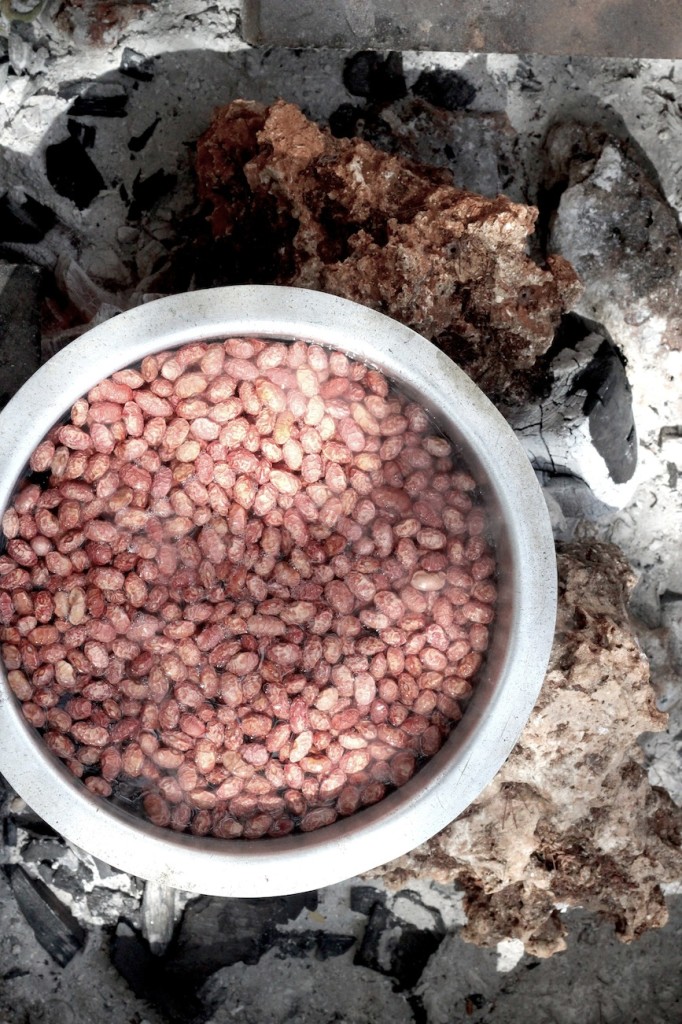 For the Coconut Rice (Wali wa Nazi)
For the Coconut Rice (Wali wa Nazi)
Utensil: Mbuzi ya Nazi – Traditional Coconut Grater
This is the most amazing coconut rice I have ever tried, it is so good it could be eaten plain. The Mbuzi, which is funnily also the name for goat, is a tool used to grate fresh coconut. It is a wooden seat with a serrated blade at the end so that the person grating can sit on it and push the coconut shell against the blade.
The amounts of coconut milk can be replaced by store bought versions, but we encourage you to try freshly grated coconut if you can find it near you. Using pieces of fresh coconut on a standard cheese grater should work too.
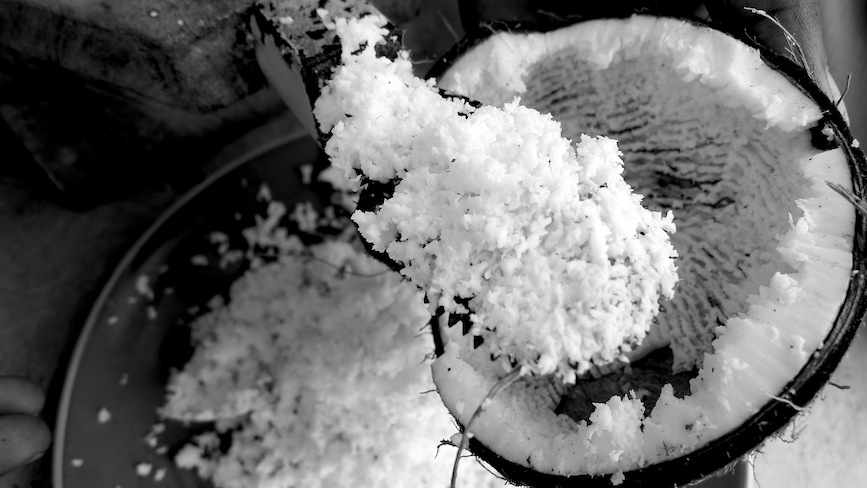
If using fresh coconut:
1 freshly grated coconut
2 tbsp water
1 tsp salt
½ kg white rice (long grain or basmati)
or
250ml coconut milk
Put the grated coconut into a bowl or measuring cup and add 2 tbsp of water, then squeeze coconut pulp with hands until milk comes out.
Squeeze out the juice into a glass, reserve ½ cup coconut milk for the maharagwe and reserve the pulp onto a plate.
Repeat the process by mixing the left over coconut pulp with water until you get 3 cups of liquid, squeeze again and strain until you get a total of 3 cups diluted coconut milk. (If using store bought coconut milk, mix 1 cup/250ml of coconut milk with 2 cups water)
Heat the 3 cups of diluted coconut milk until boiling and add the salt, then add the rice and stir occasionally.
Wait till it boils again and cover with lid while turning the heat down; cook covered for 15 minutes and your rice should be done.
To Serve
Serve the maharagwe together with the coconut rice and eat with your hands, taking a bit of beans and rice at the same time. Otherwise, you can try out our Chapatis instead (recipe below).
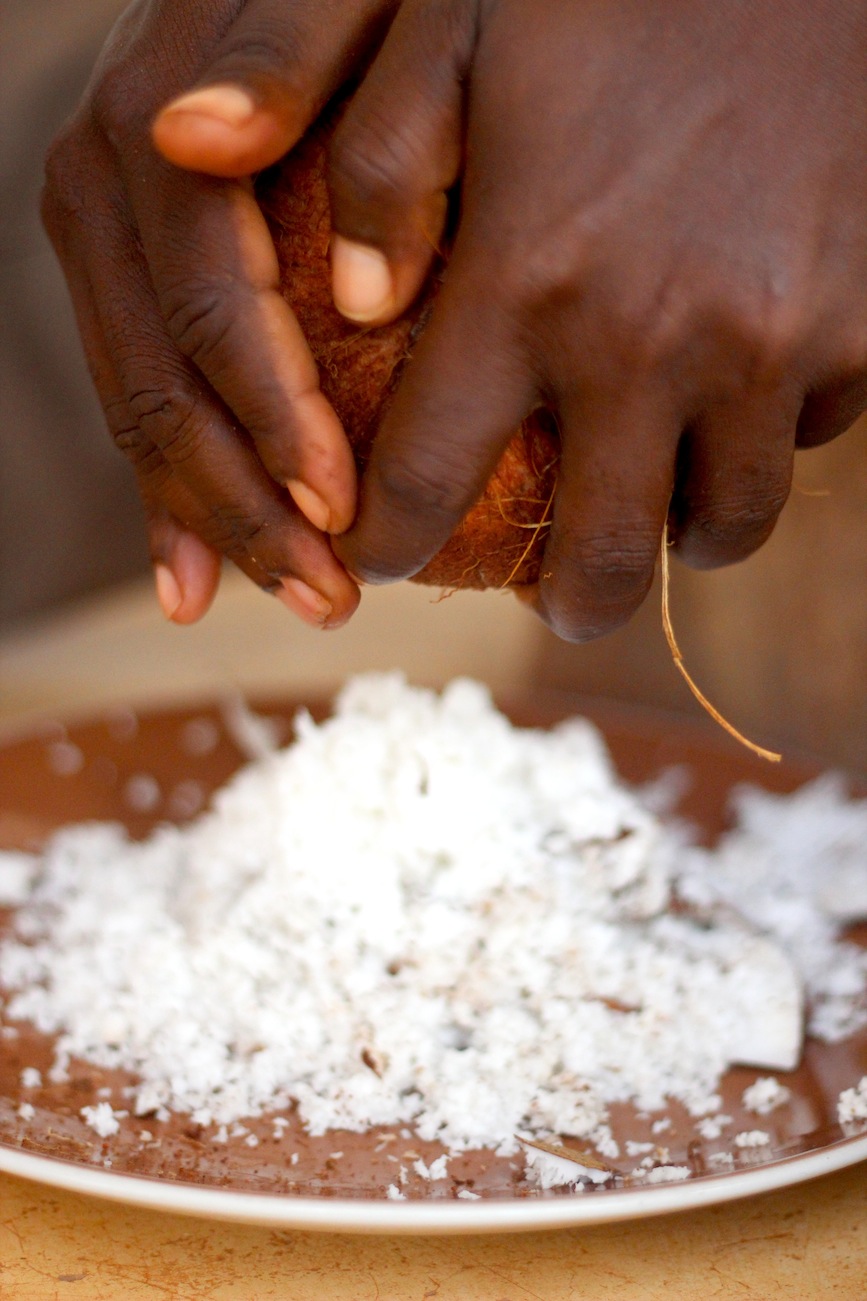
KENYAN CHAPATI | tʃɑ-ˈpɑti |
The origin of Chapati
This recipe is for Kenyan Chapatis, which are a bit thicker than the Indian version. Meaning ‘flattened round’ in Indian languages, chapati size can vary from region to region and every kitchen. They can be eaten for breakfast or to accompany any saucy meal.
“Chapati is great if you are on the run, because you can fold it in your pocket and go!” laughs Kamau, one of Idi’s neighbours.
Makes 6 or 8 chapatis
3 cups of white wheat flour
2 tbsp vegetable oil and more for rolling
1 tsp salt
1 cup warm water and a bit
Put the flour into a large mixing bowl and heat the oil and add to the flour, mix a little then add 1 cup warm water until you get a sticky dough, then knead dough until elastic and smooth.
Turn the dough out onto a lightly floured surface and roll into a log shape in order to section dough into equal parts – we made 6 the first time, which makes for big chapattis, you can easily make 8.
Roll each piece into a ball – Take one ball and form into a flat circle with a rolling pin by turning it 180 degrees every time you roll it. When you have a nice size round drizzle 1 tsp of oil on top and use your hand to lightly distribute the oil evenly over the chapatti.
Roll up the round like a cigar towards you and stretch it out a little at the sides, then take one end and roll it up like a snail while tucking in the other end. Re-flour the surface and roll out this snail shape into a flat circle again.
While you are making the chapattis, you can keep a pan with a little oil heating up so that once you are done rolling, you can fry your first chapatti. Slide the chapatti into the pan and when cooked on one side, add a bit more oil on both sides to brown it, take the back of a metal spoon and gently circulate it over the chapatti to create a nice sheen.
Repeat until all the chapattis are cooked and serve them stacked on a plate and cut into quarters for easy mopping up of sauce.






